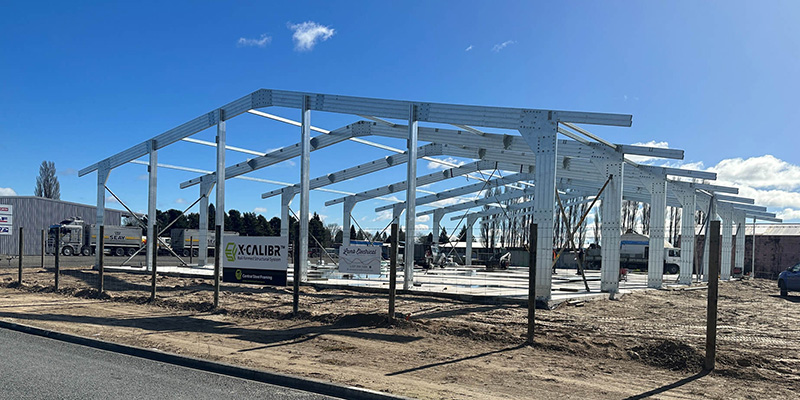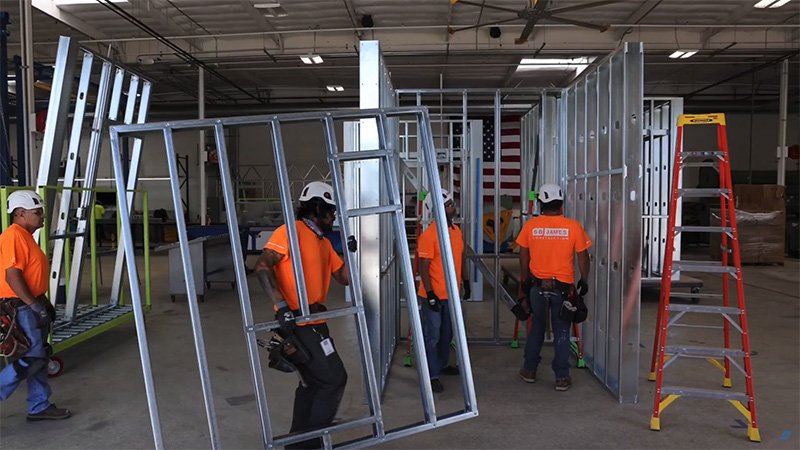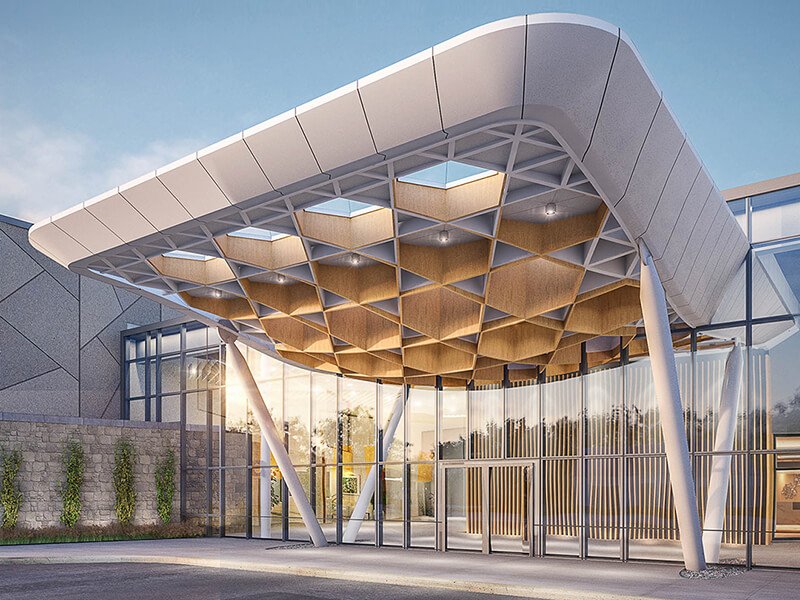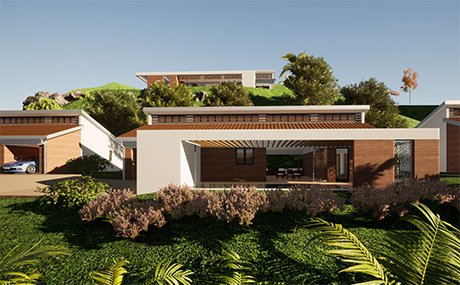Steel frame vs. wood frame construction - building the future with Howick
⏱️ 10 min read
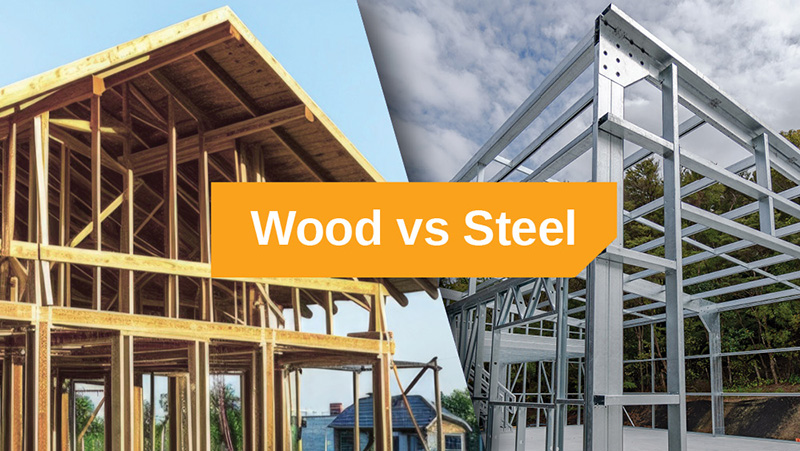
When deciding between steel frame and wood frame construction, there is more at stake than just material choice. Construction speed, durability, efficiency, sustainability, cost, and even aesthetics come into play - especially in a world where modern construction methods are reshaping how we design and build.
At Howick, we have spent nearly 50 years pioneering roll-forming technology for steel framing, helping architects, builders, and developers create precision structures that can be built faster, safer and more sustainably.
Here’s a closer look at the steel frame vs. wood frame debate—and how our solutions at Howick empower you to make the right call.
No time? Here are the key takeaways
-
Steel framing advantages: Offers superior strength-to-weight ratio, precision, durability, resistance to fire, pests, and extreme weather, and significantly reduces construction waste and long-term maintenance costs.
-
Wood framing benefits: Generally has lower initial costs, provides natural insulation, uses familiar construction methods, and, when responsibly sourced, can be renewable—though it requires higher ongoing maintenance.
-
Cost considerations: Steel has higher upfront material costs but is more economical long-term due to efficiency, speed of construction, and minimal maintenance compared to wood.
-
Environmental impact: Steel framing is highly recyclable (88% recycling rate in the U.S.), while wood can contribute to deforestation if improperly sourced; steel framing is environmentally advantageous in the long-term due to durability and recyclability.
-
Recommendation: Steel framing, especially using automated roll-forming methods like Howick's, is recommended for projects prioritising speed, reduced waste, structural integrity, and lower lifecycle costs, while wood framing may still be suitable for smaller, more traditional projects.
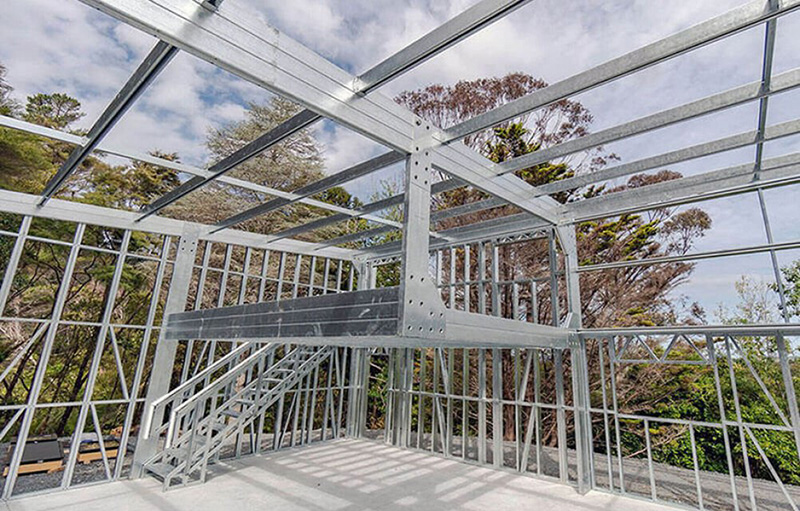
Table of Contents
- Why steel frames are reshaping modern construction
- Why wood frames still appeal to many builders
- Cost comparison: Steel frame vs. wood frame
- Durability and strength: Leaning toward steel
- Environmental considerations of steel vs wood
- Maintenance matters: Steel vs. wood
- Ready to explore steel framing with Howick?
Why steel frames are reshaping modern construction
Strength, speed, and precision
Steel frames stand out for their exceptional strength-to-weight ratio, making them ideal for many construction projects, especially larger or taller structures—even in challenging climates. Unlike wood, steel doesn’t warp, shrink, or rot, and it offers superb resistance to pests and fire.
“Steel framing is about more than just stronger buildings; it’s about building smarter. The precision and resilience of steel perfectly aligns with modern construction methods, allowing projects to be completed more efficiently and create less waste.”
— Nick Coubray, CEO of Howick
At Howick, our FRAMA™ range of roll-forming machines produce light gauge steel (LGS) components with near-microscopic accuracy, reducing onsite rework and labour. In fact, the Steel Framing Industry Association cites that light gauge steel framing can reduce construction waste by up to 10 times compared to traditional timber framing. [Source: SFA_Framing_Guide_07.pdf]
Durability for the long haul
From earthquakes to hurricanes, steel framing generally delivers better performance under extreme weather conditions.
- Fire resistance: Steel is non-combustible.
- Moisture and pest resistance: No warping, termites, or rot.
- Longevity: Steel’s inherent resilience means fewer structural repairs over time.
Sustainability and recyclability
According to the American Iron and Steel Institute (AISI), steel is 100% recyclable and has the highest recycling rate of any material on the planet, with approximately 88% of steel in the U.S. being recycled. This endless recyclability helps reduce the overall carbon footprint of construction projects
Why wood frames still appeal to many builders
Upfront cost advantages
Wood is often seen as carrying a lower initial price tag. Indeed, for some smaller residential builds—particularly in regions where lumber is locally sourced—wood frames can be a practical option. Also, the material does not require specialised equipment to assemble.

Thermal insulation and familiarity
Wood naturally insulates, which can contribute to a comfortable interior climate. Also, many contractors have decades of experience working with timber, so there is no learning curve and adaptions to building processes are less involved than for those new to modern steel framing systems.
Renewable resource
Responsibly harvested timber can be considered a renewable resource. Builders who source certified lumber from well-managed forests often highlight the lower embodied energy needed to produce the material. However, deforestation, pest vulnerability, landfill waste, and frequent maintenance required with timber offset some of these benefits.
Cost comparison: Steel frame vs. wood frame
Initial material costs:
- Wood: Typically lower upfront.
- Steel: Higher initial investment, particularly for large-scale projects.
Long-term maintenance:
- Wood: Requires ongoing treatments against rot, insects, and moisture.
- Steel: Lower maintenance over time, minimising costly structural repairs.
Labour expenses:
- Wood: Familiarity limits the need for training for crews, but wooden framing requires experience and time to make good onsite.
- Steel: Slightly steeper learning curve for inexperienced crews, but automated solutions—using tools like the Howick X-TENDA™ 3600—significantly cut onsite labour by delivering precision-made components.
“Many builders ask about the ‘sticker price’ of steel vs. wood,” explains Nick. “But when you factor in vastly less waste, faster build times, and fewer call-backs, steel framing proves to be highly efficient —and it’s even more cost-effective in the long run.”
Durability and strength: Leaning toward steel
When dealing with mid and high-rise buildings, seismic zones, or simply wanting the peace of mind that comes from robust, long-lasting structural components, steel frames overshadow wood.
- Load-bearing excellence: Steel can handle heavier loads over broader spans without relying on multiple interior support walls.
- Extreme weather ready: From high winds to heavy snow loads, steel stands up to environmental stresses.
By combining steel framing with offsite prefabrication—it’s easier than ever to deliver consistent, high-quality frames that are installed rapidly once they arrive on the job site.
Environmental considerations of steel vs wood
- Recyclability: Steel can be recycled repeatedly without losing its properties, often containing a significant percentage of already-recycled content.
- Wood’s renewable angle: Harvested from certified forests, wood has appeal. But large-scale timber use can contribute to deforestation if not sourced responsibly.
- Manufacturing and waste: While initial steel production can be energy-intensive, advanced methods—plus the material’s long service life— more than balance out its environmental impact. Wood, on the other hand, creates more onsite waste (which can be as high as 20% in some stick-build cases).
Design flexibility: Who wins?
Steel
Steel frames are prized for wide-open layouts with minimal load-bearing walls. This versatility translates into expansive interior spaces and bold architectural expressions—ideal for commercial and industrial projects. The FRAMA™ range can be adapted to produce everything from studs to intricate truss systems, letting architects push design boundaries without sacrificing structural integrity.
Wood
Wood frames shine in projects that emphasise natural aesthetics in spaces with smaller footprints, such as single-family homes or cottages. They are also considered easier for crews already skilled in traditional framing. However, large or complex designs typically require engineered wood beams or additional support structures, possibly removing any advantage.
Maintenance matters: Steel vs. wood
-
Steel: Generally minimal. Regular inspections and occasional protective coatings (if needed) keep steel frames in top shape for decades.
-
Wood: Prone to moisture damage, insect infestations, and warping, requiring periodic sealing, painting, or structural reinforcement.
For property owners keen on low upkeep, steel wins out. A building constructed with precision-made Howick frames typically needs very few repairs—translating to significant savings over the building’s life cycle.
Making the call: Steel or wood?
There’s no one-size-fits-all answer, but the following guidelines can help:
Project scope and scale
Multi-unit sites, and mid to large, multi-level buildings: Steel framing is often the go-to where ease, strength, efficiency and speed win out.
One-off single-family homes or small builds: Wood framing can suffice, although more builders are discovering the benefits of light gauge steel for custom homes, too.
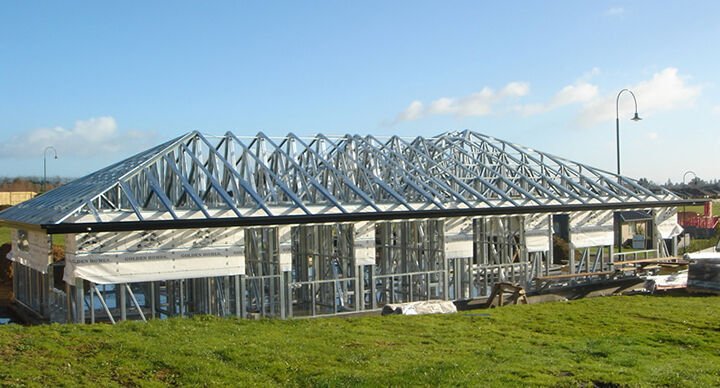
2. Budget and timeline
If speed, reduced waste, and minimal rework are key, an automated steel-framing approach—like using the X-TENDA™ 3600—can dramatically streamline construction.
If immediate upfront material costs must be kept low, and local codes or design don’t demand steel’s higher load capacity, wood remains an option.
3. Environmental goals
Builders aiming for higher LEED or Green Building standards may lean toward steel’s recyclability and durability.
Sustainably sourced wood is still a contender but verify certification and consider the building’s lifespan.
4. Local regulations
Hurricane or seismic zones often recommend or mandate steel for added safety.
Traditional neighbourhoods or heritage sites may encourage wood for aesthetic conformity, though steel can be cladded to replicate various appearances.
“It’s not about forcing every project to adopt steel frames,” says Nick. “It’s about helping builders see how modern steel framing solutions—especially those optimised with roll-forming—can solve real construction challenges. The best projects find a balance between design vision, budget realities, and long-term performance.
For further reading on the benefits of steel framing, check out our article on the reasons why light gauge steel outperforms timber for modern construction.
Ready to explore steel framing with Howick?
At Howick, we believe in empowering builders with cutting-edge roll-forming technology that redefines how structures come together—faster, smarter, and stronger. If you’re considering shifting from wood to steel, or simply want to explore how automated roll-forming machines can enhance your current steel framing process, we’re here to help.
- FRAMA™ range: High-speed light gauge steel framing solutions.
- X-TENDA™ 3600: Telescopic framing for adaptable design needs and more.
- Custom roll-forming machines: Tailored to unique profiles and industrial-scale projects.
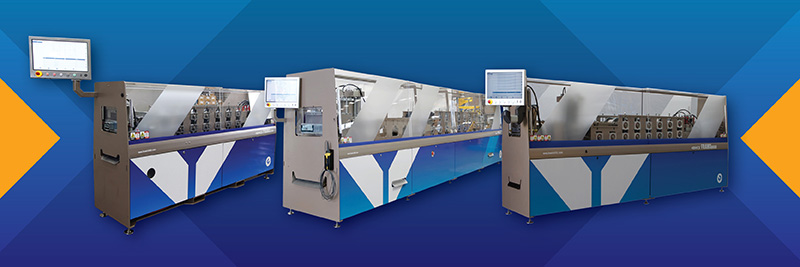
Additional resources and case studies
- Visit our construction Stories pages for more on how the construction world is extending its steel framing capabilities with Howick roll-forming technology
- Check out our Showcases for in-depth looks at projects leveraging advanced light gauge steel solutions.
Conclusion: Shaping the future of construction
Choosing between steel frame vs. wood frame ultimately hinges on factors like project scope, climate, budget, and sustainability goals. While wood retains a firm place in residential builds, steel framing—especially when powered by Howick roll-forming innovation—offers unparalleled strength, design freedom, and long-term savings.
Interested in learning more?
Get in touch to discover how Howick can help you build better buildings—smarter, faster, and more profitably.
Pass this knowledge along - share this article today.
March 2025 #Features
